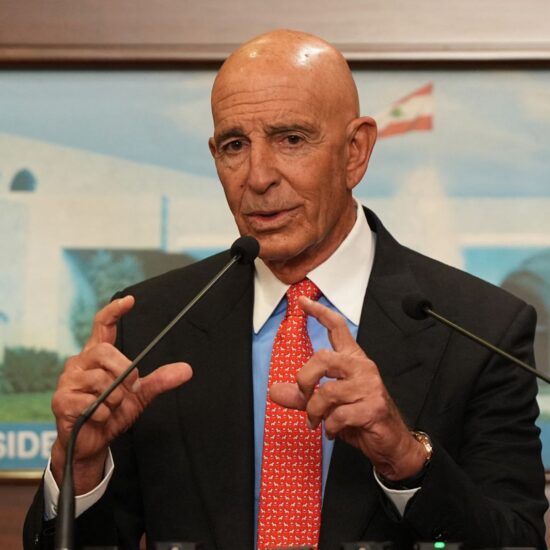
Most proposed salary adjustments have been incremental and insufficient to keep pace with soaring living costs, leaving many workers effectively poorer in real terms. Public sector salary increases, while politically sensitive and often demanded by unions, place additional strain on an already fragile treasury and complicate broader economic reform efforts. As a result, salary adjustments have been partial, gradual, and often contested, failing to provide meaningful relief to the majority of workers.
A meeting held last week between Labor Minister Mohammad Haidar and the Index committee — the body tasked with reviewing wage policy and made up of union representatives and economic bodies — to address minimum wage hikes and other adjustments for private sector employees was doomed to failure sources told NOWLEBANON. A review of wage policy is seen hectic for Lebanon corporate whereas wage earners see it as way to relieve some stress from their income. The minister announced plans to increase the minimum wage to LL28,000,000 in a first phase – the equivalent of $312 at today’s rate of LL89,500 to the dollar – up from LL18,000,000 (around $200), or a 50 percent hike from its current level.
Once more Lebanon’s salary increases since 1994 have generally failed to keep pace with inflation, resulting in a significant erosion of real wages and purchasing power over time. After the end of the civil war and currency stabilization, the first notable wage adjustment occurred in 1996, followed by a lump sum increase in 2008 that raised the minimum wage from LBP 300,000 to LBP 500,000. However, from 1996 to 2011, despite inflation rising by approximately 50% according to official indexes, wages remained largely stagnant for sixteen years, causing a sharp decline in workers’ purchasing power.
In 2011, under pressure from unions and social unrest, Lebanon raised the minimum wage by 40% to LBP 700,000 (about $466 at the official rate), and increased wages for other salary brackets as well. Still, these increases were criticized as insufficient and uneven, particularly because salaries above certain thresholds were not adjusted. Meanwhile, inflation continued to rise, especially after 2019, when Lebanon’s economic crisis triggered hyperinflation. Between 2009 and 2023, inflation averaged around 47.5% annually, with a cumulative price increase exceeding 5,500% over those years. For example, an item costing 100 Lebanese pounds in 2009 would cost over 5,600 pounds by early 2024, but salary scales have not increased anywhere near this magnitude. The mismatch between salary adjustments and inflation has been stark in recent years. While nominal wages have seen some increases, they have not kept up with the soaring cost of living, especially after the Lebanese pound’s sharp devaluation and the surge in prices for food, housing, and services. Inflation rates reached 171% in 2022 and 221% in 2023, far outstripping salary hikes, which have been incremental and often delayed. This has led to a dramatic loss of real income for most Lebanese workers, pushing many into poverty.
Salary Adjustment Efforts and Challenges
In response to the deteriorating economic conditions, there have been multiple attempts to adjust salaries, particularly focusing on minimum wages and public sector pay, to help workers cope with hyperinflation and rising poverty. However, these efforts have encountered numerous obstacles. Lebanon has failed to draft a comprehensive wage policy that links salary adjustments directly to inflation and the cost of living, ensuring that minimum wages and public sector salaries can cover basic needs. Strengthening social safety nets is also crucial to protect the most vulnerable populations from economic shocks while broader reforms are implemented. Economic stabilization measures, including addressing fiscal deficits and stabilizing the currency, are essential to create an environment where sustainable salary growth is possible. Negotiations between employers, unions, and government bodies has again and as usual reached deadlocks due to disagreements over the scale and timing of wage increases.
Historical trend
During the 1990s and early 2000s, Lebanon’s inflation was relatively moderate and stable, generally in the single digits or low double digits annually. For example, inflation rates hovered around 5-10% in the 1990s, reflecting a recovering post-civil war economy. Salary scales during this period were adjusted periodically, but often lagged behind inflation, causing gradual erosion in real wages.
From 2008 to 2018, Lebanon’s inflation rate averaged around 5-6% per year, with some years of deflation or very low inflation. However, starting in 2019, inflation accelerated sharply due to the financial collapse, currency devaluation, and political instability. According to data from Trading Economics and Worlddata.info, Lebanon’s annual inflation averaged approximately 46% from 2008 until 2025, with a historic peak of about 268% in April 2023. For instance, inflation reached 221% in 2023 alone, reflecting hyperinflation conditions. This hyperinflation has drastically reduced the purchasing power of Lebanese salaries. While nominal wages may have increased nominally, salary adjustments have not kept pace with inflation, leading to a severe decline in real income. For example, the minimum wage set in 2011 was increased to 700,000 Lebanese pounds (about $466 at the official rate), but due to currency depreciation and inflation, its real value has plummeted. By 2024-2025, despite some nominal salary hikes, the real wage value is estimated to be a fraction of its 2011 equivalent, as inflation outstripped salary increases by several multiples.
To illustrate, an item costing 100 Lebanese pounds in 2009 would cost over 5,600 pounds by early 2024, meaning that salaries would need to increase more than 56 times just to maintain purchasing power. Yet, salary scales have not been adjusted anywhere near this magnitude. Inflation rates of over 200% in recent years have made it impossible for salary increases to keep up, resulting in widespread income erosion and increased poverty.
The Gap Between Income Inequality and Salary Adjustments
The widening income inequality in Lebanon is both a cause and consequence of inadequate salary adjustments. Rising poverty and deepening inequality have been exacerbated by the failure to implement effective wage increases. The poverty gap, which measures the intensity of poverty, has grown from 3% in 2012 to 9.4% in 2022, reflecting the increasing severity of deprivation among the poor. Inflation and currency depreciation have eroded real wages, disproportionately impacting low- and middle-income earners who lack dollar savings or assets.
This unequal economic impact has fueled social fragmentation and growing mistrust in institutions, as many Lebanese perceive corruption and unfair distribution of resources. Additionally, the labor market has become increasingly segmented, with many workers pushed into informal and low-wage jobs due to the failure of salary adjustments to provide sustainable livelihoods. This dynamic perpetuates a cycle of poverty and inequality that undermines social cohesion and economic resilience. According to the World Bank’s 2024 report, poverty has more than tripled over the last decade, reaching 44% of the population by 2022, with some regions like Akkar experiencing poverty rates as high as 70%. The crisis has pushed at least 60% of the population below the poverty line as of early 2025. The wealth and income are increasingly concentrated among a small upper class, while the majority struggle with shrinking incomes and rising costs of living.
The economic collapse has also led to a dollarized, cash-based economy, which further marginalizes those without access to foreign currency or financial assets. The labor market has contracted sharply, with unemployment surging to nearly 30% and long-term unemployment affecting nearly half of the unemployed. Many Lebanese workers have been forced into low-skilled, informal jobs previously held by Syrian refugees, reflecting a downward shift in labor market quality. Despite the severity of external and internal shocks and problems, gross minimum wage in Lebanon is nominally higher than many countries in the region when considering the last official increased in January 2019. But gross minimum wage witness widening wage differentials across sectors and jobs and flexibly indexed to economic changes in addition to other household needs varies extensively across locations. The gross minimum wage holds no gross aggregate earnings, which increases significantly off-the-books earnings, and carry no secondary sub-total of allowances and benefits. the top 1 and 10 percent of the adult population receive almost 25 and 55 percent of total national income, which places Lebanon among the countries with the highest levels of income inequality in the world, alongside Brazil, Russia, South Africa and the United States.
Polarization
The Lebanese income distribution appears to be extremely polarized. The top 10 percent richest individuals receives almost four times as much as the bottom 50 percent of the population. The middle 40 percent of the distribution, which broadly speaking represents the middle class, is left with close to 30 percent of the total national income, which is far less than the top 10 percent. This is quite different from what we observe in Europe or in the United States, where the middle class receives more or about the same income share as the richest 10 percent over the same period. I implement various robustness checks and produce variant series for each hypothesis made during the estimation procedure.
Research finds that income is extremely concentrated in Lebanon, with the richest 10 and 1 percent adults accounting for almost 55 and 25 percent of total national income, on average throughout the period. In contrast, the bottom 50 percent of the Lebanese population is left a bit more than half of what is accruing to the top 1 percent. Besides, the Lebanese income distribution appears to be extremely polarized. The government price indices do not have a monthly follow-up in the past since late 2019. Wage and earnings adjustments are ensuing cents or tens of thousands of LBP. The gross minimum wage index is negative in value indicating a downward trend. The higher gross minimum wage in principality terms than the Lebanese Lira means eligibility ceiling of 69.1 gross minimum wage in earnings which is higher than gross large executives earning in many companies estimated higher than 4,008 times these in Consumer, Services, etc.
Current Salary Adjustment Scale
The Lebanese salary adjustment system has not been modified since its establishment, even though it was built during a time of different conditions. The current salary adjustment scale is based on a grading system that is inherently linked with the salary scales for public employees. Initially, the public sector employment scale in Lebanon covered all forms of public administrations. It established three main categories of employment (A, B, and C), each of which has its own subdivisions, hierarchies, qualifications, skill levels, and compensation. The C340 salary scale was established for salaries of a purely administrative nature, covering some positions in ministries, public administration, public institutions, the army, and public agencies. The B320 salary scale was established for clerical duties and routine work comprising seals, offices, calls, photographs, documentation, and manuscript writing. Accordingly, this scale encompassed a larger number of positions and, given the assigning of salaries being contingent upon the year of employment, was viewed as the most detrimental figure. When the public employment scale was established in 1977, the category A220 included central administration posts as well as higher-ranking managerial positions in its ministries. This was the main scale for the last granted salary adjustments. All of these adjustments were made through a seven-point salary increase across the board. The latest salary adjustment was announced in January 1997, before Lebanon’s economy crumbled.
More of the same
In 1977, the Ministry of Finance hired a consultancy firm to elaborate a financial report on the current salary scales, which can be summarized as follows. “Managers’ salaries have not changed since 1977.” “Enough deputies have been in office for more than a dozen years; all salaries remain paranoid. As for old deans, professors with long legacies are paid barely $1,093.” “Custodians are paid according to the 1975 salary.” “Clerks did not receive any adjustment in their salaries, regardless of school years or experience.” “A clerk, for example, emanating from his/her school, has to be paid LL. 5,000 per month.” And finally, “It is curious how the Department of Health insists on an annual salary increase for all contracts, although these contracts however grossly exceed the previously mentioned grades.” According to such assessments, salaries were established until 1996. The competitiveness of salaries and the rapid drop in the financial levels of the Lebanese pound demand a review of the salary adjustment legal system. The structure and grading systems should be revised; all adjustments should take into consideration tenure and year of employment, and salaries granted out of the system should be formally reviewed. Lebanon, sovereign and public sector jobs account for 15% of job jobs distributed among the 11 ministries and at least 43 public institutions. An account of employee jobs in the public sector is publicly available on the Civil Service board webpage. It includes the job title, institution, and grade assigned. The public sector jobs are graded by the Civil Service Board which, in 1959, issued Law 112 to codify the grading of jobs, institutes, and contracts in ministries, public establishments, and state-owned companies. According to the law, the grading and monthly salaries of these agencies were different from the ones defined in the law. In order to specify salaries and salaries for public sector jobs, the decree 3734/62 was issued to create a salary adjustment scale for only these agencies which has remained in effect to this date (Dah et al., 2010). Consequently, each institute and its public employees in Lebanon earns specific amounts based on this salary adjustment policy and its adjustment requests. In 2016, the Government and Parliament passed a budget law which for the first time in years had included the salaries and salaries of the public institutions and the adjustment requests affecting the institutions regulated under Law 112 and linked to Decree 3734/62. More of the same policy has been engendered by successive government without any hope for real change.
Maan Barazy is an economist and founder and president of the National Council of Entrepreneurship and Innovation. He tweets @maanbarazy
The views in this story reflect those of the author alone and do not necessarily reflect the beliefs of NOW








